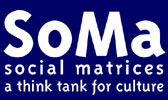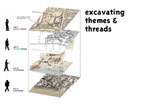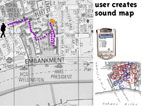
This page documents some of our early concept scenarios of use for Urban Tapestries created at the outset of the project in 2002.
| SYSTEM | |
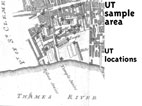 |
An Urban Tapestries system might be hosted by a school, local library or local chamber of commerce, perhaps to create an organic local archive of memory and history, or to embed local tourist information. Local residents and visitors would be able to add their own knowledge to the system, making it a dynamic public authoring platform. |
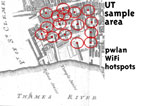 |
Many of the locations (tagged via GPS coordinates) would be covered by public wireless hotspots, such as those provided by WiFi nodes (802.11). |
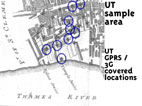 |
Others might rely on the user having a GPRS / UMTS service enabled on their mobile phone. The Urban Tapestries PDA application would use Bluetooth to communicate with the mobile phone to access content and locations not covered by WiFi hotspots. |
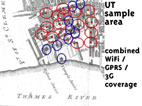 |
Combining both mobile and WiFi radio technologies will give Urban Tapestries flexibility both for accessing and publishing to the system, and in the range of devices that might be able to be used. |
| USER EXPERIENCE | |
|
Urban Tapestries seeks to create new ways of appreciating and interacting with the fabric of the city. It can both excavate and enrich the layers of experience that weave together in our everyday lives. |
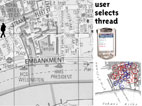 |
Users of Urban Tapestries will be able to select threads to follow (such as historical or social threads linking individual places), or drift across all the threads. Having selected a thread, the user will receive a map of the locations in the area associated with it. They can either follow it as a trail, or set the system to give a proximity alert when they pass a location. |
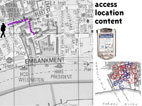 |
On arrival at a location, the user receives an alert. They can then access the content associated with the location. Content can be 'clipped' to the PDA and stored for later perusal. |
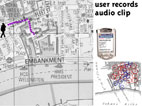 |
At each location the user is invited to record an audio clip of their sound environment. These form the basis of the sound maps which users can create as sonic albums or mappings of their journeys through the city. Each clip is linked to the location and its content. |
| PUBLIC AUTHORING | |
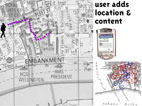 |
Public
Authoring is crucial to the unique vision of Urban Tapestries. Users will be able to add locations by tagging the GPS coordinates and uploading to the system. Content such as text, sounds, movies and images will also be uploadable, either from the PDA or via the internet. |
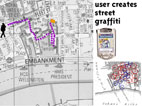 |
For more immediate social interactions, a time-limited street graffiti system will enable users to leave messages tagged to locations. Perhaps to announce a local event or just to leave an observation. |
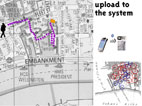 |
All these elements of public authoring will hinge on live uploading to the system. |
| SHARING | |
|
A key element of Urban Tapestries' interactivity is the sound maps that users can create from their recordings and associated location content. These maps will be saved in a format that will allow users to share them with others. |
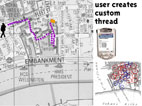 |
Users can create their own threads through an area: perhaps linking their favourite cafes, or sites of social or historical significance. These can be uploaded to the system for others to access as system threads. |
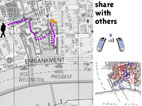 |
Sound maps, threads and content can be shared directly with other users via Bluetooth. |
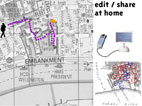 |
Or the sound maps can be uploaded to a desktop computer for editing and sharing via the internet. |
